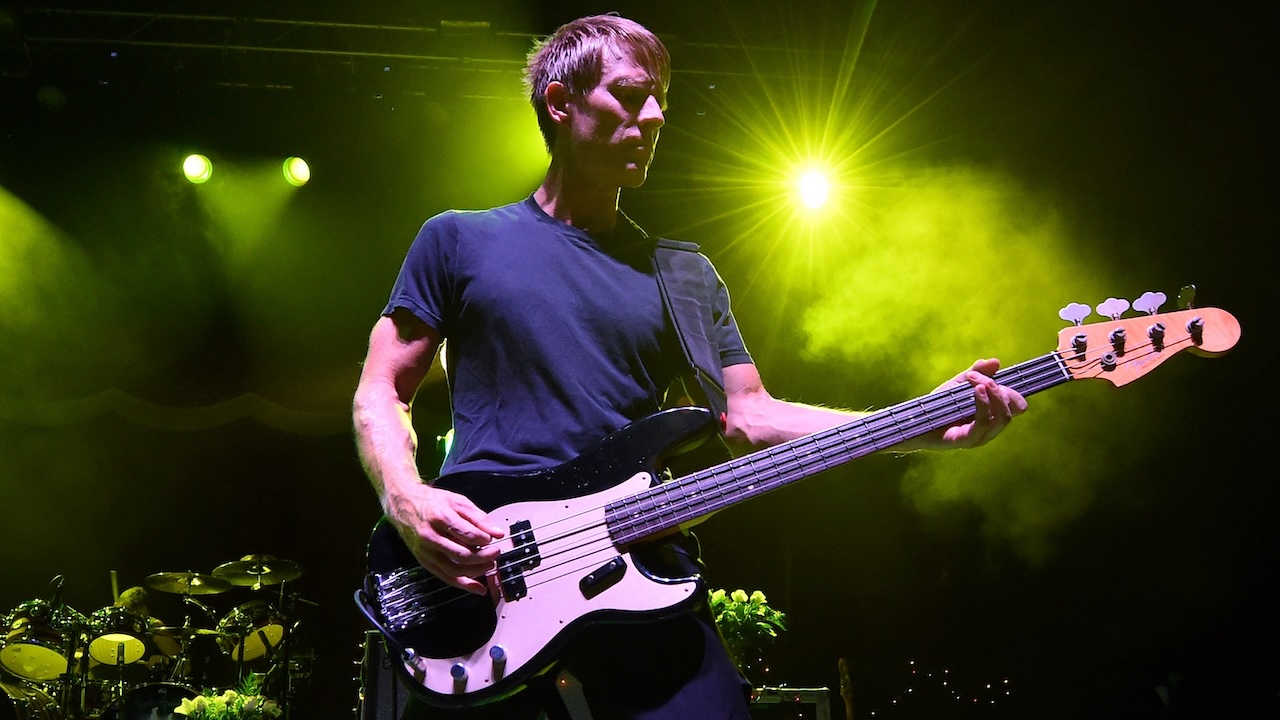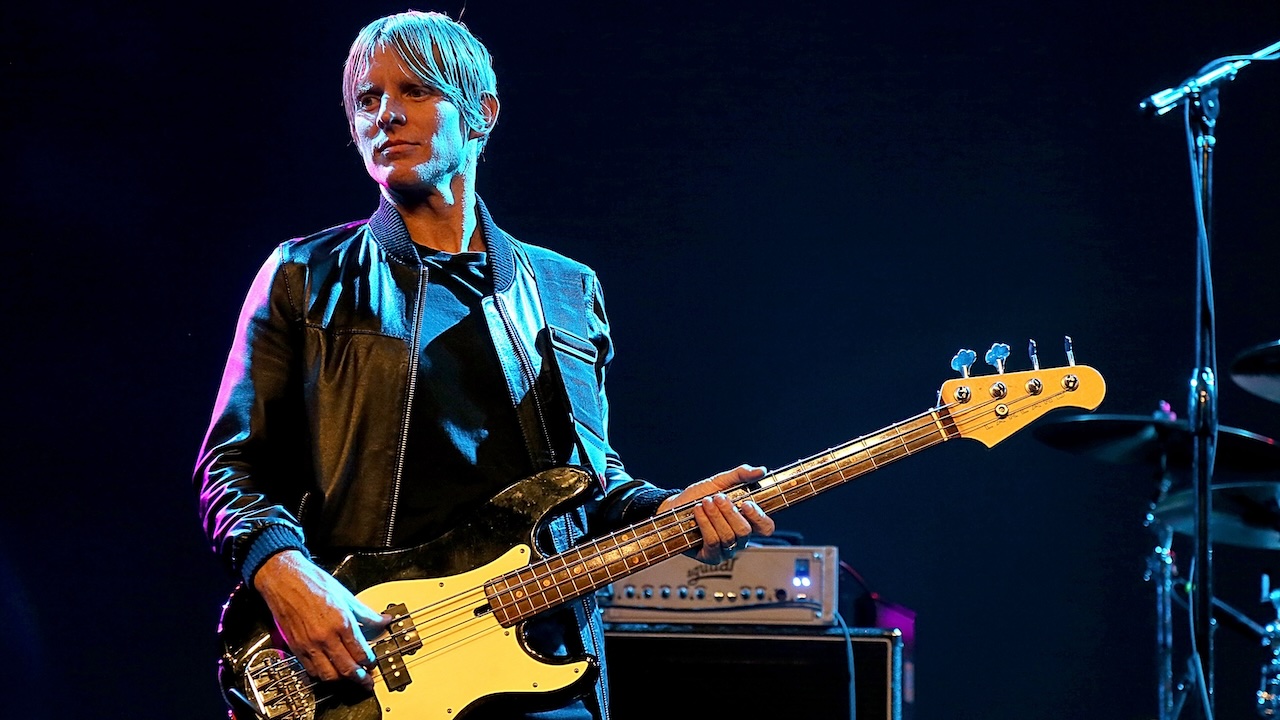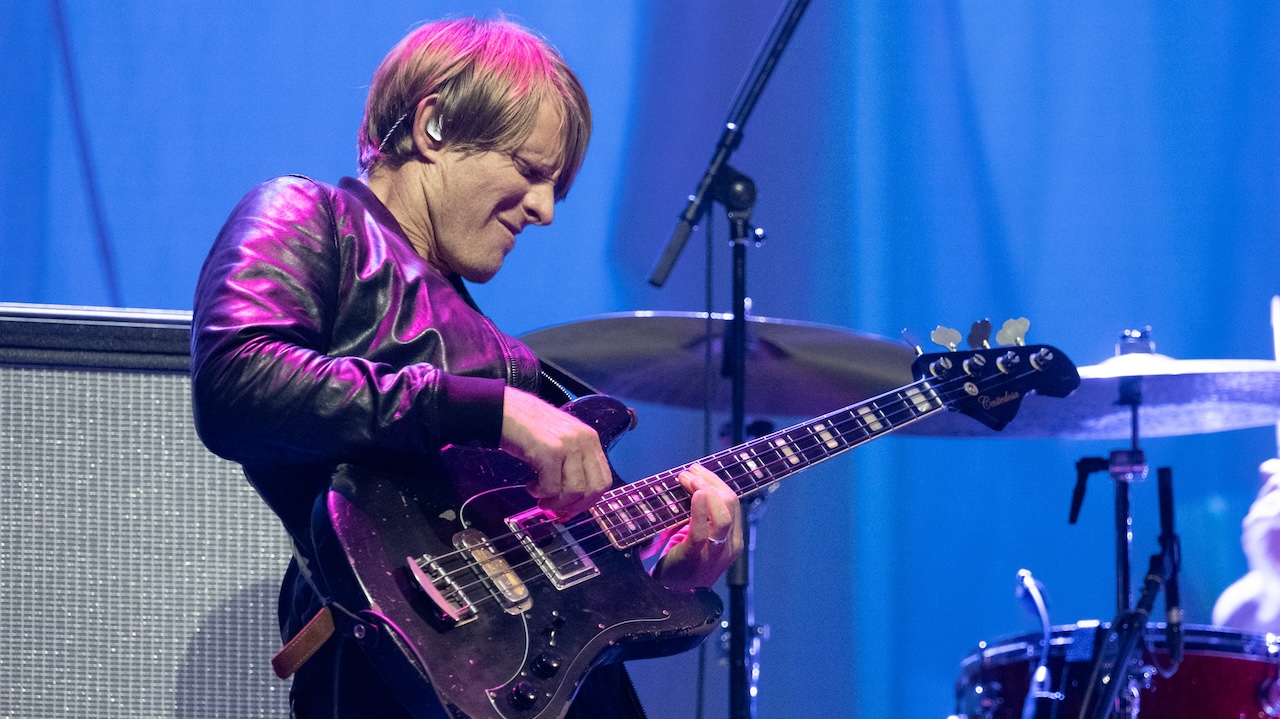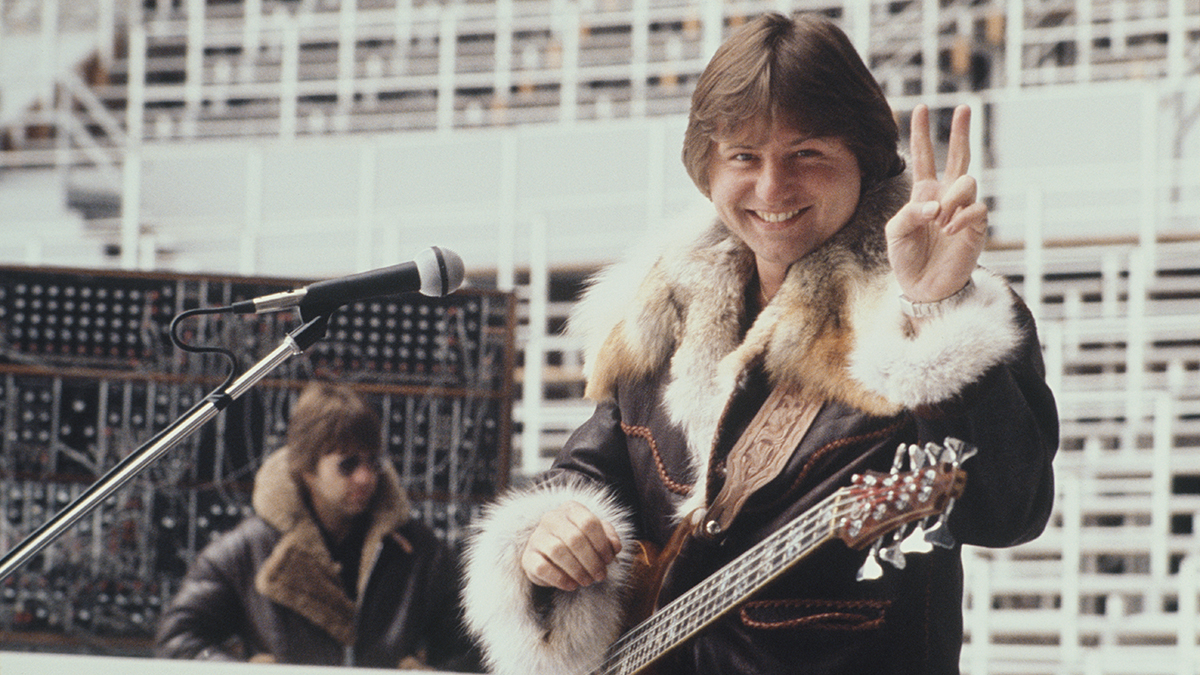“I knew my pentatonic scales before I went to Berklee – and 90% of the time that’s what I’m called upon to play”: For the third time in his career, Chris Chaney has landed one of bassdom’s most coveted gigs – a slot in the re-energized AC/DC
Jazz-schooled bassist Chris Chaney has now secured three career-defining gigs – first with Alanis Morissette and Jane’s Addiction, and now with AC/DC

“I always knew I was going to spend my entire life dedicated to bass guitar,” Chris Chaney told Bass Player back in 2003. “From early on, I just knew. Maybe it has something to do with being born on Marcus Miller’s birthday.”
For the third time in his whirlwind career, Chris Chaney has struck gold, earning one of bassdom’s most coveted gigs. This time it’s a slot replacing Cliff Williams in the revamped and re-energised AC/DC, the legendary rockers who are hitting the road with a European tour in support of 2020’s Power Up album.
“We are thrilled to finally announce the European Tour,” the band wrote in a statement. “Angus, Brian, Stevie, and Matt will be joined by Chris Chaney to carry the torch for Cliff.”
Rewind to the mid 1990s, the ever-humble, Berklee-schooled Chaney was gigging steadily in Los Angeles, playing jazz at the famed Baked Potato and R&B in the house band at Dragonfly. “That was an amazing gig. We played everything from Aretha to Soundgarden, and we backed 20 singers a night.”
As fun as it was, it all changed in March 1995, when Chaney was invited to go on tour with an obscure Canadian songwriter named Alanis Morissette.
“Taking the Alanis job was a hard decision. The ball was really starting to roll for me in L.A.; I had a variety of gigs, and I was playing almost every night. Lots of guys were saying, ‘You're finally playing jazz at the Baked Potato, and you're going to leave that behind to play pop music?’ But I liked Alanis, I liked her songs, and I liked the band so I took the gig.”
In between Morissette's ensuing success and his new job with AC/DC, Chaney's diverse chops and winning attitude have established him as a studio mainstay.
All the latest guitar news, interviews, lessons, reviews, deals and more, direct to your inbox!
The following interview from the Bass Player archives took place in June 2003.
You're often confronted with lots of fairly basic rhythms, but your grooves are never boring. How do you do it?
“I learned more about pop rhythms from Alanis Morissette drummer Gary Novak than from anyone else. Gary taught me that it's all about the subdivisions within the beat. I learned that even when you're just playing the root on the downbeats, if you understand the beats’ subdivisions and how they work together, you can make the shit as funky as hell.
“Once you understand exactly where to place your notes, you can start building your grooves from the drums on up. That's a crucial skill in pop music. Grooving with a drummer is all about the space around the beat, and being able to control your notes – not just when you play them, but how you play them and for how long. Understanding that will allow you to do more with a simple groove.”
Many of your basslines have an almost vocal quality that supports the melody as well as the groove.
“Gary helped me develop that aspect of my style, too. He told me, ‘Don't attack every note. It's all in your left hand.’ And I realized you can control just about everything with your left hand and maintain a light attack with your right. That lets you control your dynamics a lot better, too. So now even my simplest basslines are full of pull-offs, slides, and hammer-ons.”
“I really like what it does to my phrasing: Everything gets slinkier, and it gives my lines a much looser feel. This probably goes back to listening to Stevie Wonder's pentatonic Minimoog basslines when I was growing up; that stuff is not about the attack. To this day, I'll spend hours with Boogie On, Reggae Woman. Stevie is the Mozart of our day; no-one else stacks up musically.”
How did you end up joining Jane's Addiction?
“I had just finished recording Tommy Lee's first record with his band, Methods of Mayhem, and then I went back on the road with Alanis. When I finally joined Tommy to tour, I met Perk, who was playing Tommy's drum parts onstage.
“We had a good connection right away; he's so open-minded and such a gifted musician, and he's incredibly fun to play with. Even if you're playing a simple groove on two and four, he'll move his beats slightly left of center, and all of a sudden a simple groove is full of texture and nuance. We continued to play together, and then I met Dave Navarro and Perry Farrell.”
What’s your favorite part about the gig?
“The fact that the door is never shut on a part. There's always room for change, even if I think I've found the perfect part. I was fortunate to be able to take home a song and listen to it for weeks, and if I wanted to go back and change something three weeks later, I could just do it. That's not a luxury you have as a studio player. I didn't actually end up changing any of my parts – but knowing that I could made me feel quite spoiled.”
How did you fill the shoes of original Jane's bassist Eric Avery?
“I take the weight of Eric Avery very seriously; I feel honored to be playing his parts, and to have the other guys open to me creating my own lines for new songs. Also, learning Eric's parts note-for-note forced me to get my pick playing up to speed. I had always wanted to be better with a pick, but I've always been primarily a finger player.
“I used a pick on I'm Still Here, the Johnny Rzeznik tune from the Treasure Planet movie, and on Andrew W.K.'s I Get Wet, but that was about it.
“The other amazing thing about Eric's playing is his feel. Stephen Perkins told me Eric would play tons of acoustic guitar, and I think that really contributed to the feel and texture of his basslines. He incorporates lots more into his playing than just basic chugga-chugga rock rhythms.”
How did the Jane's sessions lead to your playing with Michelle Branch?
“Michelle was recording in the studio across the hall from us. During some downtime in the Jane's sessions, her producer – John Shanks, who is kind of a legend around the old A&M Studios – asked if I'd like to come lay down some tracks. I was pretty much left to my own devices.
“Michelle had most of the melodies down, and the song structures were worked out, but the rest was a blank page. Since then I've done other stuff with John, from a big Celine Dion track to some edgy, grassroots pop with Will Hoge.”
Who were your early bass influences?
“In high school I had a couple of Rush buddies. The drummer was the biggest Neil Peart fan in the world, so I fell right into learning Geddy Lee's parts. That was a real challenge; he's such a progressive player, especially for rock. But now I think tackling that stuff right off the bat worked to my advantage.
“Geddy made me realize that I was gonna have to practice my ass off to be any good at this! It wasn't long before I was heavily into Zeppelin and Aerosmith, too. I came to McCartney and Jamerson later, and I spent hours with those Marvin Gaye records when I did finally discover Jamerson. Same with Jaco. I don't sound anything like him, but I could still probably play Donna Lee.”
When did jazz enter the picture?
“When I was 14 a friend's older brother turned me on to Miles Davis, and then came John Coltrane, Wes Montgomery, Charles Mingus, Clifford Brown, Cannonball Adderley, Hank Mobley, and on and on until I discovered Marcus Miller. His playing on David Sanborn's Straight to the Heart blew my mind.
“He has this sound that nobody else can even touch. So I am heavily influenced by jazz, even though John Paul Jones' riffs and Stevie Wonder's pentatonic Minimoog synth-bass parts are usually the first things that pop into my head.”
Now that your technique has caught up with your early influences, what influences your playing these days?
“My influences have become more conceptual. I had the pleasure of hanging out with Gary Willis, and he opened up my head to a whole new process of approaching the bass. I don't know if my brain ever would have gone there. He made me realize how important it is to be able to play simply – to consistently come up with parts that work for the song. It's a cliché, but it's so important.
“So even in the most basic musical setting, I'm always trying to hear more than just the whole-note. Even though that approach is important, and I can do that for days and be content if it's serving the music, I'm always trying to bring something different to the table.”
How much bearing does your time at Berklee have on your playing today?
“My Berklee education definitely opened me up, especially in terms of harmony, and applying that knowledge to bass expedited my creative process. Understanding right away what works and what doesn't, and being able to move around between chords, is certainly part of my foundation. I also learned to read and to understand written rhythms, and that really helps in the studio.
“On the other hand, Berklee was much more about jazz education, so lots of the advanced harmony I learned stays in the background of my bass playing. I knew my pentatonic scales before I went to Berklee, and 90 percent of the time that's what I'm called upon to play.”

Say you've just been handed music for the first time in the studio. How do you come up with a part?
“Unless we're playing written parts, I use the same approach most of the time, regardless of the artist or style: I clear my mind, listen to the other instruments, focus on the progression and the overall song structure, and start hitting roots as the song passes by.
“Then I begin searching for the part. The more the song passes by, the more I start hearing the part that should be there. I don't know where that comes from, but I always hear something. And that something gradually progresses until it becomes part of the song.
“Open-minded listening is the key. It's what helps me understand what is an appropriate part. It may not be the clichéd sound or part for that particular genre; it may be something totally different. But I can usually tell right away if it will work.
“It's tough to analyze, and it's hard to say exactly where that inspiration comes from. It's really cool that any other bass player, given the same song, would come up with a different part. I love that.”

Your open-mindedness is certainly reflected on your resume.
“Well, being locked into, say, Metallica as the only cool band out there is just as harmful as the jazz snobbery that says you're not a real musician if you aren't playing Coltrane changes in all 12 keys at 300 BPM. Those outlooks really hinder your overall musicianship, and they can seriously affect your career.
“The more you know, the more you can add to the music. And you should always, always try to add as much as you can, whether you're playing with others who aren't as good as you are or players who have much more experience than you do. That's another thing – let the experience of others kick you in the ass.
“Any way you can give yourself a push is great. Real players are inspired to seek out a kick in the ass; that's what moves me, every day. If I just sat on top of my own mountain, where would I be? Alone on my own mountain, looking down on my own stuff. That just doesn't sound fun to me.”
“I'm much more into climbing than sitting still and looking backwards. That's why it's incredibly important to be open-minded about your bass playing, to be into as many different styles as possible. All music is valid, and there's always another envelope to be opened.”




